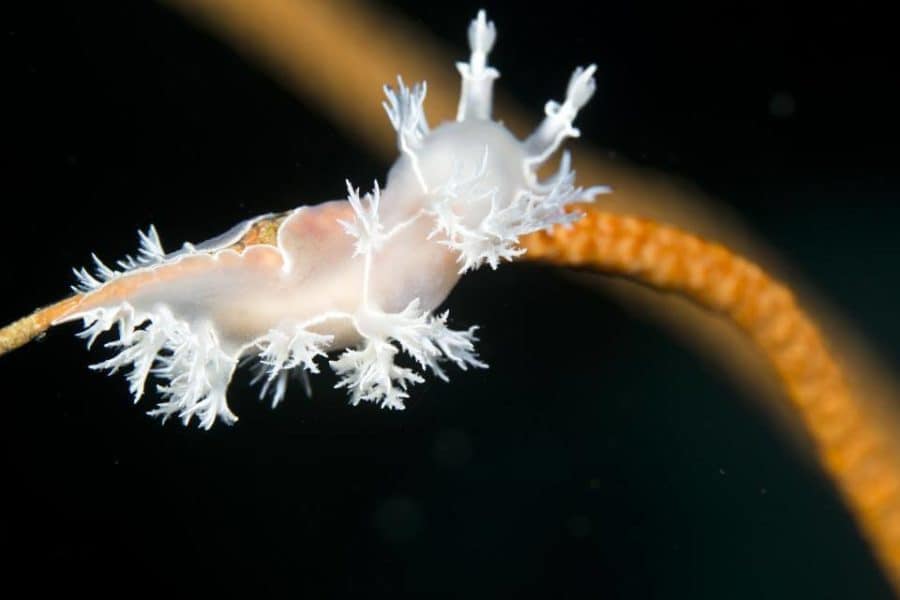When most people think of rare species, they think of endangered ones that humans have caused to be rare through habitat loss, poaching, climate change and other disturbances. But some species have always been rare — occurring in small densities throughout their range — throughout their evolutionary history. Yet little is known about the traits that allow for them to be chronically rare and stay rare for long periods of time.
A perspective paper from the University of California, Davis, in the journal Ecology Letters suggests that for many species, rarity is not a guarantee of impending extinction. Instead, the traits that enable some species to be rare may hold the ticket to their survival.
The paper predicts what these traits might be and how having them could place chronically rare species at an advantage during crises.
“During great extinction events, almost every species will suffer,” said author and paleontologist Geerat Vermeij, a professor with the UC Davis Department of Earth and Planetary Sciences. “The one that can withstand being rare and survive will have a real advantage during extinction events and crises. The question is, what enables a rare species to survive?”
What allows rare species to persist
UC Davis evolution and ecology professor Rick Grosberg and Vermeij delved into this problem from an interdisciplinary perspective.
“Not all species have to have many individuals close to each other for the species to survive,” said corresponding author Grosberg, director of the Coastal and Marine Sciences Institute at UC Davis. “The strategy for establishing viable populations is to consider how they reproduce.”
The authors predict rare species can have sustainable populations if:
- Fertilization occurs inside or close to an adult.
- Mates use signals to identify and attract each other from afar.
- Adults are highly mobile, or they have help from pollinators or other animal intermediaries that deliver their gametes, such as egg cells and sperm, over long distances.
- Two sexes are combined in a single individual, as is the case with many snails, worms and some sea stars.
When rarity can be detrimental
Other forms of rarity, like a limited range and a small population size for species that once were common, are not sustainable and could lead to extinction.
Species unlikely to persist at low numbers for long periods of time:
- Tend to be broadcast spawners, casting their gametes into water or air with the hopes of connecting with a mate.
- Can only recognize mates over short distances.
- Are sluggish or sedentary as adults.
- Are distinctly male or female.
Sea urchins and abalone, for example, have a harder time recovering from population declines because their reproduction relies on broadcast spawning. The individuals become so far away from each other that the egg and sperm never unite, making reproduction in the wild nearly impossible.
Understanding rarity can help conservation
Knowing which traits enable species to be rare could help conservation managers better manage both rare and common species, and better design sanctuaries and preserves on land and at sea.
“By learning how a species can be rare, we can also learn how to protect species that cannot be rare,” Vermeij said.
‘How do they do it?’
Little is known about rare species. They are notoriously difficult to sample since they are, by definition, rare. There also tends to be little funding available to study a handful of individual animals. The paper bluntly states that there are “virtually no reliable data to support our predictions” and calls for more research support on this topic. The authors note that, taken collectively, most species on Earth are likely rare, particularly in tropical rainforests.
This perspective piece was inspired by observation, anecdote, and curiosity: Grosberg has seen the same soft coral under the same rock for the past 35 years while walking the coastline of Bodega Bay. A colleague who has walked the coastline south of the Golden Gate Bridge for roughly the same time span knew of only two or three others. Grosberg had also seen a sea slug every couple of years while another colleague said he, too, had seen only one or two of them.
“You immediately start asking yourself, how do they do it? It has to be almost impossible to find a mate,” Grosberg said. “Yet there they are. It makes you wonder.”
These stories tend to surface when those studying the natural world come together, signifying a potential role for citizen science to help fill in the gaps.
The paper was supported in part by a grant from the National Science Foundation.


